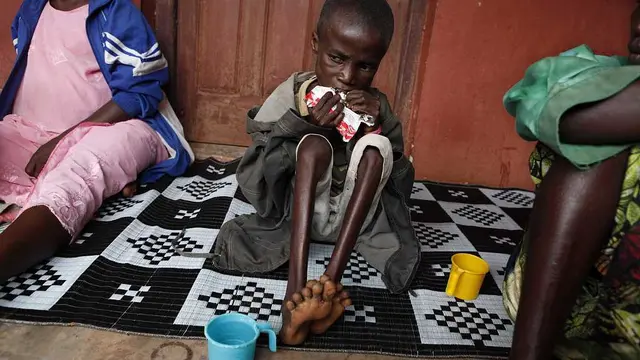Globally, the number of people suffering from hunger continues to rise.
Nearly 820 million people didn't have access to enough food in 2018, an increase of nine million compared to the previous year.
These numbers have gone up three years in a row, making the Sustainable Development Goal (SDG) of Zero Hunger by 2030 a tough task to achieve, the State of Food Security and Nutrition in the World report released Monday said.
In 1995, countries made a concentrated effort to ensure food availability, to control the spiraling rate of malnutrition. The action resulted in a gradual slump in global hunger rate till 2015, but since then it has been continuously on the rise.
As a result of poor nutrition, children and women are facing the worst. Malnutrition is leading to tardy progress in halving the stunting rate and reducing the number of babies born with low weight.
"Our actions to tackle these troubling trends will have to be bolder, not only in scale but also in terms of multisectoral collaboration," the heads of the United Nations' Food and Agriculture Organization (FAO), the International Fund for Agricultural Development (IFAD), the UNICEF, the World Food Program (WFP) and the WHO said in a joint statement.
Africa and Asia worst affected
The largest number of people, nearly 514 million, with extremely low access to food resides in Asia, a majority of them live in Southeast Asian countries.
The situation is much more alarming in Africa that has the highest number of people in the world, reeling under hunger pangs. In Eastern Africa, more than 30.8 percent of the population is severely undernourished.
A major income inequality gap prevails in many countries witnessing a rise in hunger, the report found.
Such discrepancies are making it even more difficult for the poor, vulnerable, or marginalized to cope with economic slowdowns and downturns. Climate change, conflicts and a steady rise in population are further aggravating the global hunger rate, the report added.
Asia and Africa are also home to nearly three-quarters of all overweight children worldwide, primarily driven by the consumption of unhealthy diets, the report added.
In southern Asia and sub-Saharan Africa, one child in three is stunted. In Latin America and the Caribbean, around 42.5 million face hunger pangs.
"We must foster pro-poor and inclusive structural transformation focusing on people and placing communities at the center to reduce economic vulnerabilities and set ourselves on track to ending hunger, food insecurity and all forms of malnutrition," the UN agencies' leaders said.
(CGTN)
 简体中文
简体中文

